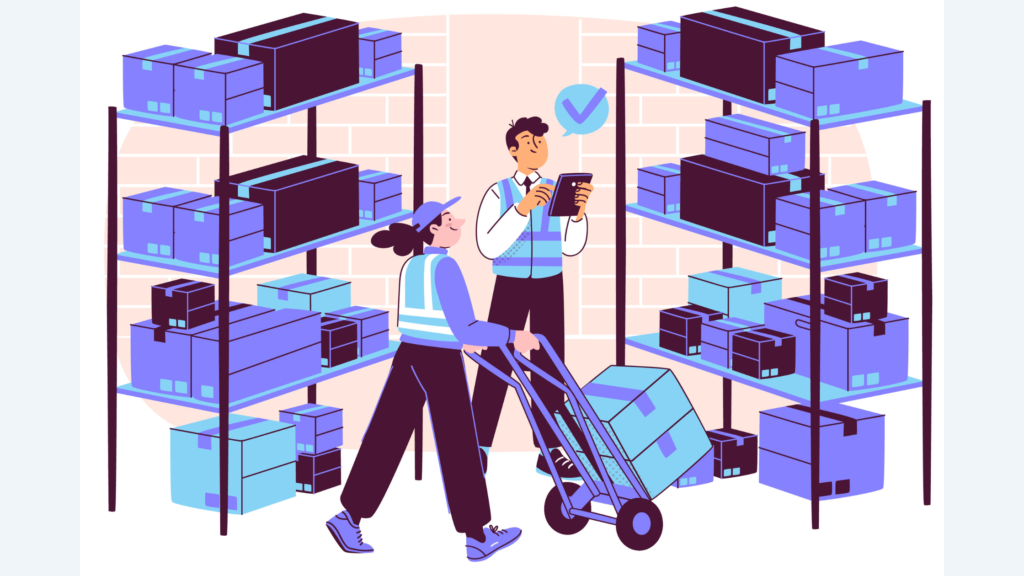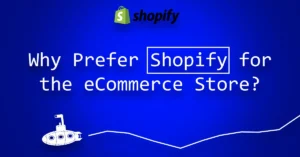Also read:
Alright listen, to running an online store? It’s chaotic. Let’s just call it what it is.
You’ve got ads flying everywhere, customer messages piling up, random inventory hiccups (because that one product everyone suddenly loves… yeah, sold out in an hour). And on top of that? You’re expected to track “metrics.”
Metrics, meaning all those fancy numbers everyone on LinkedIn loves bragging about but let’s be real half the time, no one explains what they actually mean or which ones truly matter.
So let’s cut the corporate fluff. I’ll tell you, plain and simple, which numbers you should eyeball regularly to keep your eCommerce business from turning into an expensive hobby… or a full-blown dumpster fire.
1. Conversion Rate Also Known As “Are You Leaving Money On The Table?”
Look, traffic’s great. We all love seeing website visitors climb like your favorite crypto coin in 2021, but if nobody’s buying? That traffic’s basically… digital window shoppers. Cute to look at, but zero money in the bank.
Want to boost conversions?
- Speed matters. If your site’s slower than a Monday morning, you’re losing folks.
- Clear product photos I’m talking about multiple angles, close-ups, maybe even a 5-second video showing how it works (because no one trusts blurry stock images).
- Trust signals: badges, reviews, guarantees. People buy from brands they trust, not mysterious, shady websites that look like they were built in 2004.
- Oh, and mobile-friendly? Non-negotiable. Half your buyers are probably on their phones while ignoring Netflix.
2. AOV (Average Order Value) Squeeze More Out Of Every Cart
We touched on this, but let’s go deeper. Increasing AOV isn’t about tricking customers, it’s about making their purchase better.
Real-life examples:
- Ever bought skincare? Notice how they always suggest the matching cleanser/serum? That’s intentional bundles boost AOV.
- Food delivery apps? “Add fries for ₹99.” Classic AOV play. Works like a charm.
- Apparel stores? “Buy 2, get 10% off.” Boom, higher AOV.
You’re not forcing people to spend, you’re offering more value, and in the process, you grow your bottom line without constantly chasing new buyers.
3. (Customer Acquisition Cost) Know When You’re Bleeding Cash
Ads, influencer deals, giveaways they’re all fun… until your CAC’s higher than your profits.
Here’s the thing: CAC fluctuates. During peak sales seasons (hello, Diwali or Black Friday), it spikes. Competition gets fierce, everyone’s fighting for eyeballs.
Watch this like a hawk:
- Break down CAC by channel (paid ads vs. organic vs. referrals)
- Test creatives often use the same old ads? Fatigue sets in, CAC climbs
- Retarget like your business depends on it (because it kinda does)
Lower CAC means your margins breathe easier. And nobody wants to suffocate on high ads bills.
4. CLV (Customer Lifetime Value) Play the Long Game
Quick sales are cool, but relationships? That’s where the magic is. A strong CLV means your business isn’t just surviving off desperate one-time sales it’s building a community.
Boost CLV with:
- Personalized follow-ups (No, “Hey [First_Name]” doesn’t count if everything else feels robotic)
- Loyalty perks points, early access, VIP treatment. Everyone loves feeling special.
- Consistent, quality products the fastest way to burn CLV? Deliver something that breaks, underwhelms, or disappoints. Don’t do that.
Think beyond the first sale. The brands crushing it? They get people coming back season after season, year after year.
5. Cart Abandonment Rate Stop Losing Sales Mid-Funnel
Picture this: someone’s hyped, adds stuff to their cart… and vanishes. Happens all the time.
Why?
- Shipping shocks at checkout
- Slow website hiccups
- Over-complicated payment process
- Or, they just got distracted (we’re all guilty of clicking off mid-shop to answer texts)
Combat this with:
- Abandoned cart emails friendly, maybe with a cheeky discount
- Exit-intent popups (timed just right)
- SMS nudges (if they opted in, of course)
Every recovered cart? Pure profit that would’ve been lost otherwise.
6. Repeat Purchase Rate Because One-Time Buyers Are Expensive
Acquiring a customer costs money. Getting them to buy again? That’s where your profit margins grow.
Want them back?
- Send reorder reminders (works wonders for consumables supplements, skincare, coffee)
- Run seasonal campaigns “We’ve got new arrivals, just for you”
- Treat them like insiders early access, sneak peeks, members-only sales
The brands that master retention? They scale faster without bleeding marketing budgets dry.
7. Inventory Turnover Stay Lean, Stay Smart
Dusty shelves? Bad. Stockouts on hot items? Worse.
Balance is key:
- Fast turnover = healthy cash flow
- Too slow = dead inventory tying up money
- Too fast = missed sales, disappointed customers
Pro tip: Track trends, use pre-orders carefully, and never assume what sold last year will always be your bestseller. Consumer tastes change faster than Instagram trends.

8. NPS (Net Promoter Score) Your Reputation In One Number
Wanna know if people love your brand or secretly loathe it? NPS gives you that reality check.
A few low scores? Normal can’t please everyone. But consistently bad NPS? You’ve got a deeper issue, maybe customer support lacking, or your product didn’t meet expectations.
Use feedback wisely:
- Fix recurring complaints fast
- Celebrate promoters turn them into ambassadors
- Engage detractors sometimes saving a bad experience creates lifelong fans
Happy customers = free marketing. Angry ones? Well… they talk, too. Loudly.
9. Return & Refund Rate Plug The Profit Leaks
High returns = wasted time, shipping costs, and restocking headaches.
Causes:
- Poor product descriptions
- Inaccurate sizing
- Low-quality materials
- Overpromising in ads
Reduce returns by:
- Using real photos, not stock imagery
- Adding customer reviews with sizing insights
- Creating how-to-use guides or videos
Returns eat margins. Keep them in check, your profits breathe easier.
10. Traffic Sources Don’t Pour Money Down The Wrong Channels
If 80% of your buyers come from Google, but you’re dumping cash into Facebook? You might be wasting time and budget.
Track:
- Which sources convert best
- Where high bounce rates live (low engagement = problem)
- Organic vs. paid performance
Double down on:
- SEO if organic’s winning
- Email if your list converts like crazy
- Social if engagement’s authentic (not just vanity likes)
Not every channel deserves your cash. Get picky, your margins will thank you.
11. Website Bounce Rate As Known As, “Why’d You Ghost Me?”
Picture this: Someone clicks on your store, looks around for like… three seconds, then leaves. No click, no scroll, no purchase they just bounce.
Bounce Rate tracks how often that happens.
Now, don’t stress every bounce. Sometimes people click the wrong link, sometimes they’re not ready to buy, or maybe they were expecting memes and landed on your blender store. Happens.
But consistently high bounce rates? Red flag, friend.
Common Culprits:
- Slow site speed (fix that no one’s waiting 10 seconds in 2025)
Tools like thecarbonfootprint.ai check both speed and sustainability of your website and provide the actionable tips to reduce them. - Confusing design (if your store looks like a maze, peace out)
- Content mismatch (your ad promised one thing, your landing page delivered…something else entirely)
Want to lower bounce rates? Tighten up your messaging. Make your site snappy. Use clear headlines. Pretend your ideal customer has the attention span of a TikTok scroll because they probably do.
12. Time on Site: Are They Browsing Or Bolting?
Okay, this one’s simple: how long are people hanging out in your store?
Longer time = they’re browsing, reading, maybe considering buying.
Short time = they’re probably confused, bored, or your site screamed “sketchy” vibes.
Pro tip: Adding videos, product demos, tutorials? Keeps people hooked.
Good storytelling works too don’t just slap up product pics. Tell them why they need it, how it solves their problem, or how it’ll make their cat internet-famous (if that applies, obviously).
13. Email Open Rates Because Your Inbox Game Matters
If you’re not building an email list yet… pause. Go do that. Seriously.
Email = direct line to your customers. But if no one opens your emails? You’re basically talking to yourself (been there).
Healthy open rate? Around 20-30% is solid.
Below that? Maybe your subject lines sound like spam, or you’re sending at weird times. Test stuff. Get weird with subject lines. Use emojis. Pretend you’re texting a friend.
Best part? Email converts. Way better than most social media posts, just sayin’.
14. Revenue By Channel Follow The Money Trail
You ever feel like you’re hustling everywhere Instagram, Facebook, ads, SEO but don’t actually know which one’s pulling its weight?
Revenue by Channel solves that mystery.
It tells you:
- Where your traffic comes from
- Which sources actually bring in sales
- Where you’re maybe wasting time (spoiler: not every platform is worth your energy)
Example:
If your TikTok videos get tons of views but zero sales… maybe it’s just brand awareness (cool) or maybe your product doesn’t vibe with that crowd (less cool).
Track the money trail. Double down where it counts.
15. Customer Satisfaction (CSAT) Ask Them Straight Up
Sometimes, the simplest metric? Just ask your customers if they’re happy.
CSAT is usually measured after purchase or support interactions:
“How satisfied were you with your experience?”
Scale of 1-5 easy, no overthinking.
High scores = yay, good job.
Low scores = okay, time to patch some leaks in your process.
It ain’t fancy, but it works.
16. Refund Processing Time Don’t Be That Slow Brand
Look, no one loves refunds but dragging your feet processing them? Makes people mad. And mad customers talk.
Track how fast your team handles refunds, exchanges, and complaints. Faster = better.
Even if they’re bummed about the return, handling it fast, politely, and maybe even tossing in a “sorry for the hassle” discount? That earns trust. Might turn a refund into a future buyer.
17. Social Proof Signals More Subtle, But Powerful
Okay, this one’s more qualitative, but worth watching.
Check:
- Are people leaving reviews? Good ones, not just “meh, it arrived.”
- Are customers tagging you on social media?
- Are you getting shoutouts or user-generated content?
If your socials feel crickets, maybe time to encourage reviews, share customer pics, or even run small giveaways.
People trust other people. Show off the happy customers. It’s free marketing.

❓ Frequently Asked Questions (FAQs)
1. Why track e-commerce metrics?
They help you measure performance, spot issues, and grow strategically.
2. Which metric matters most for new stores?
Conversion rate—it shows how many visitors become buyers.
3. How often should I check these KPIs?
Weekly is ideal; daily for high-traffic stores or during campaigns.
4. What tools can I use?
Google Analytics, Shopify, Meta Ads Manager, Klaviyo, and Hotjar.
5. How do I fix a low conversion rate?
Improve product pages, test CTAs, boost page speed, and add trust signals.
6. What’s a good AOV?
It varies by niche, but aim to increase it with bundles or upsells.
7. Why is CLV important?
It shows long-term value per customer and helps plan ad spend better.
8. Bounce Rate vs Exit Rate?
Bounce = left without clicking; Exit = left from a specific page.
9. Should I track ROAS by campaign?
Yes, it helps optimize budget and improve ad performance.
10. High traffic, low sales—why?
Check for poor UX, slow load times, or weak product messaging.
Frequently Asked Questions (FAQs)
1. Why track e-commerce metrics?
They help you measure performance, spot issues, and grow strategically.
2. Which metric matters most for new stores?
Conversion rate—it shows how many visitors become buyers.
3. How often should I check these KPIs?
Weekly is ideal; daily for high-traffic stores or during campaigns.
4. What tools can I use?
Google Analytics, Shopify, Meta Ads Manager, Klaviyo, and Hotjar.
5. How do I fix a low conversion rate?
Improve product pages, test CTAs, boost page speed, and add trust signals.
6. What’s a good AOV?
It varies by niche, but aim to increase it with bundles or upsells.
7. Why is CLV important?
It shows long-term value per customer and helps plan ad spend better.
8. Bounce Rate vs Exit Rate?
Bounce = left without clicking; Exit = left from a specific page.
9. Should I track ROAS by campaign?
Yes, it helps optimize budget and improve ad performance.
10. High traffic, low sales—why?
Check for poor UX, slow load times, or weak product messaging.
Final Thought
Look, building a solid eCommerce brand isn’t about chasing every fancy Key Performance Indicator. Start with these practical, real-world numbers. Track them monthly, or even weekly if you’re feeling ambitious.
And hey, don’t overthink the numbers but don’t ignore them either. They’ll tell you when things are working… or when you’re heading for a faceplant.
Need help with strategy based on these? Reach out to Adex Labs.
Author: Disclaimer: The views and opinions expressed in this article are those of the author and do not necessarily reflect the official policy or position of Digitalz Pro Media & Technologies.





